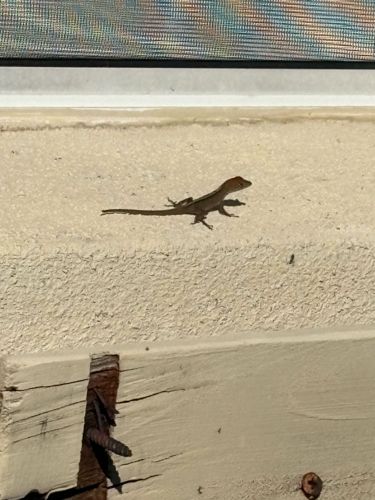Brown Anole
Scientific Name: Anolis sagrei
Order & Family: Squamata, Dactyloidae
Size: Males typically 16-20 cm (6.3-7.9 inches) including tail; females typically smaller, around 8-12 cm (3.1-4.7 inches) including tail.

Natural Habitat
Widely found in tropical and subtropical urban, suburban, and natural areas, including gardens, parks, forests, and shrublands. Often seen on fences, walls, trees, and shrubs.
Diet & Feeding
Primarily insectivorous, feeding on a wide variety of small invertebrates such as crickets, grasshoppers, flies, spiders, beetles, and roaches. They are opportunistic hunters.
Behavior Patterns
Diurnal, active during the day. Males are territorial and display head bobs and dewlap extensions to deter rivals and attract mates. They can change their color from light tan to dark brown to camouflage or communicate. Known for their ability to climb and cling to various surfaces.
Risks & Benefits
Generally harmless to humans. They are beneficial in controlling insect populations, including some pest insects. However, in some regions, they are an invasive species and can outcompete native anole species for resources, potentially impacting local ecosystems.
Identified on: 9/6/2025